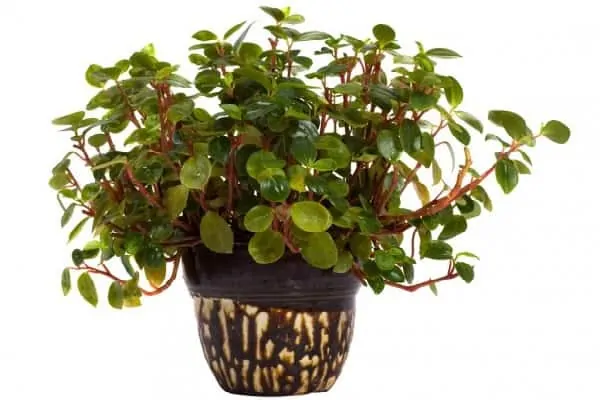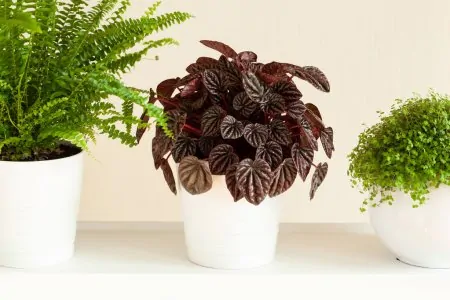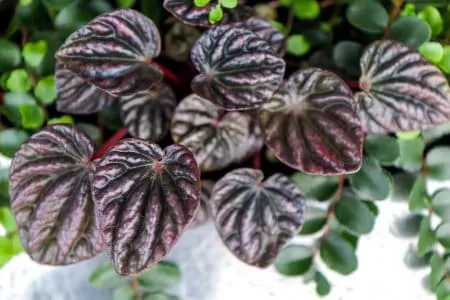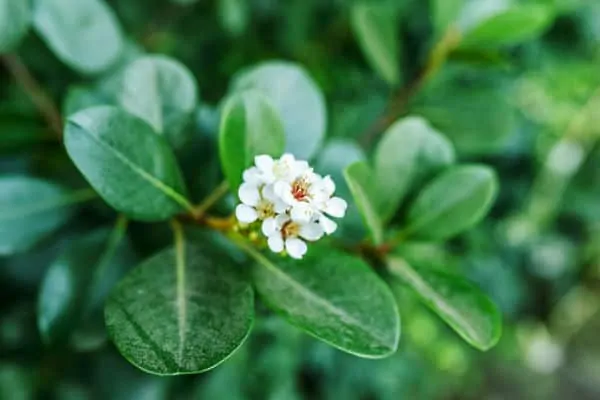Peperomia Care: A Beginner’s Guide
In this peperomia care guide, you will learn about the peperomia plant, its growth and maintenance requirements, and a few tips on how to help it thrive. Let's begin!
Peperomia Care: A Beginner’s Guide to Growing and Caring for the Peperomia Plant
You may have heard of the Peperomia plant under the names of pepper face, baby rubber plant, radiator plant, or shining bush plant. You may have also seen it in your friends’ homes. Admittedly, it is one of the most popular houseplants that people keep for its gorgeous foliage and low maintenance requirements. If you want to breathe some green life into your home or office, a Peperomia plant is an excellent choice. Let’s see today a Peperomia care guide for beginners, so you know how to start!
What is Peperomia Plant (Peperomia spp.)?
The Peperomia Plant is a tropical beauty whose genus gathers more than 1,000 known species. It is a perennial and a relative to pepper plants. People do not host it for its flowers, but its highly ornamental thick, fleshy leaves. The foliage can vary from smooth to coarse, solid, variegated, or marble, large, tiny, or heart-shaped. Its colors are also a visual show in their own right: red, purple, green, and even gray.
You can pick from so many varieties of Peperomia, that you might not know which is which. This tropical plant is typically prevalent in Mexico, South America, and the West Indies, but you can grow it in the United States as well.
Peperomia Plant Types
This plant fares the best in U.S.D.A. hardiness zones 10 to 12. Among the 1,000+ species, you can choose a few to host as indoor resilient houseplants, as not all types are available for cultivation and growth for public distribution. The most unusual varieties are in collectors’ homes, arboretums, or botanical gardens. Here are, however, some types you can grow at home!
- Peperomia argyreia – the watermelon peperomia grows about 8 inches in height and sports green foliage with silver stripes;
- Peperomia obtusifolia – the baby rubber plant resembles the rubber plant we all know and love. It can grow taller than the watermelon peperomia, featuring shiny, dense dark green foliage, although you will find some variegated types with gold and white coloration. It also makes an excellent garden ground cover on shady properties and landscapes.
- Peperomia caperata – the heart-shaped peperomia is a delight to watch, as the heart-shaped leaves also come with a waffle texture.
Peperomia care is the same for all plants in the genus, as even if they look different, they all share at least two common traits: all grow slow, and require little to no maintenance, making them some of the best hard to kill houseplants for beginners.
Peperomia Care: The Ultimate Beginner Guide
Before we begin, let’s see some aspects that all Peperomia plants share. They are relatively small plants that can endure some benign neglect. In indoor settings and with the proper care, Peperomia plants can grow up to 12 inches in height.
This feature makes Peperomia plants ideal for small indoor garden designs, balconies, windowsills, small office spaces, etc. They also boast some of the best traits of succulents – fleshy leaves and low maintenance requirements. Some varieties can reach heights of 1 to 3 feet, but in house-grown peperomias, 12-15 inches of height is a great feat.
Let’s see now the Peperomia care guide step by step!
1. Pot/Container
Plant your peperomia plant in a large pot with drainage holes on the bottom. Peperomias can live for years in small to medium containers. Their slow growth rate allows you to forget about their pots for a while. However, if you see their roots piercing outside through the drainage holes, it is time to change the container. An acidic potting mix or orchid bark will make repotting a less shocking experience for the plant.
2. Soil
As potting soil goes, peperomia needs an orchid potting mix to grow well. We recommend, however, to check out our guide on the best potting soils for different plants to learn more about them. Soil type and watering go hand in hand, so make sure that no matter the soil type you choose, it has proper drainage. Usually, in peperomia care, a mix of peat moss and perlite or coarse sand works the best.
3. Water
Given their succulent traits, peperomia plants tolerate low watering frequencies and low humidity levels. Look at the peperomia plant’s leaves. The thicker they are, the less water and humidity they need. In peperomia care, infrequent watering is better than moderate watering. Just as it goes with succulents’ care, excess water can lead to plant problems, such as root rot or fungus gnat issues.
Only water the soil in the pot when it dried. Watering your peperomia every 7 – 10 days should be enough, depending on the variety you decided to grow. The best practice in peperomia care is to allow the soil to dry as deep as 4-5 inches between two watering sessions.
4. Light
To maintain their shiny, vibrant leaf colors, peperomias need a medium-to-bright but indirect light. Morning sunlight and filtered light work just fine as well. Peperomia is also an excellent office plant, as it can easily endure 12 to 16 hours of artificial light without making a fuss.
- During the summer, make sure you don’t leave your peperomia in direct bright sunlight, as it can cause the scorching of the leaves.
- Exposure to insufficient light, on the other hand, may also cause problems: it can become leggy, drop leaves, and get a drab coloration.
In case your peperomia suffers, prune it back to the initial shape when it looked compact and vibrant in color. Also, please make a note to move the plant in case too much, or too little light caused it harms.
5. Temperature
Since it is a tropical plant, your peperomia care should focus on the temperature you are going to offer it. Experts recommend you never allow the temperature in a room to go below 50 degrees F, as it will kill the plant.
- The ideal place for a peperomia is one with a temperature between 68 and 78 degrees Fahrenheit.
- It does not like extreme temperatures, nor excessive humidity levels.
If you can take it outside in the summer in your garden, do it. If you cannot offer it a summer vacation, place the peperomia pot on a tray of pebbles and water to balance its humidity levels.
6. Fertilization
Peperomia plants do not require substantial quantities of fertilizers to thrive. Since they are not at all heavy feeders, you should give them a boost once a month during their growing season (in the summer). Peperomia fertilization should include a liquid fertilizer at ½ the recommended strength. Nevertheless, we recommend you to add a layer of organic compost once at the beginning of the summer as a top dressing.
Peperomia Plant Care & Maintenance Essentials
Here is, in short, the peperomia care requirements and tips you need to know before you bring this gorgeous and popular houseplant into your home!
Water requirements
Moist, well dried soil. Water only when the soil dried 4-5 inches in depth.Light requirements
Indirect light, medium to bright. Does well in artificial light as well.Temperature
Ideal temperature between 68 and 78 degrees F.Soil Requirements
Orchid potting soil mix with good drainageDifficulty
LowToxicity
Not toxic to humans or petsPeperomia Care: A Few Final Pro Tips
Peperomias yield some relatively unimpressive flowers, so feel free to prune them to make room for new foliage to grow.
Also, as a piece of advice, do not be shy in pruning your peperomia a couple of times per year for both cosmetic and health purposes. The timely removal of dead growths and leaves showing symptoms of damage or diseases is the surefire way to keep your peperomia in top shape.
One last thing to know is that peperomia plants are safe for pets and humans, so you can grow them around the house without fearing toxicity or allergies, as it is the case with some beautiful but deadly plants and flowers.
Bottom Line
As you saw, peperomia care is a breeze, even for beginner gardeners! No wonder it became one of the most popular houseplants to grow among people who have little time or skills to grow pretentious indoor plants!
Now that you learned how to grow peperomia, it is your time to tell us if you host peperomia plants in your home and how you care for them! Do you have other tips to share with our community? Would you like us to discuss some peperomia care issues in more depth? Let us know in the comment section below!







